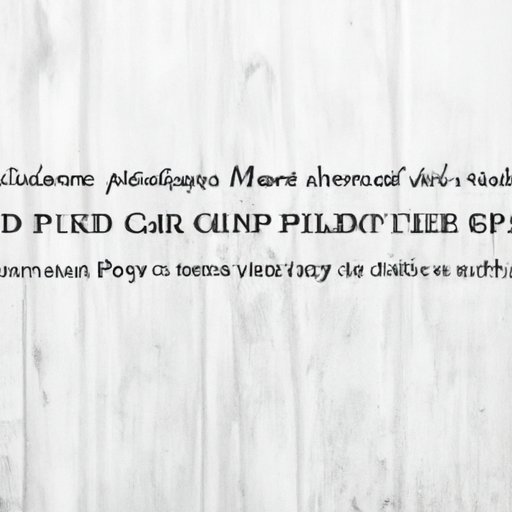I. Introduction
If you’re planning a trip to South Dakota, visiting Mount Rushmore might be at the top of your list. As one of the most recognizable landmarks in the United States, this mountain carving features the faces of four American presidents. In this article, we’ll explore the history and significance of these presidential figures.
II. Historical Overview
The idea to create a monument in the Black Hills of South Dakota was conceived in the 1920s by state historian Doane Robinson. He hoped that such a monument would draw tourists to the state, but he didn’t have a specific vision for what it would look like. The idea to carve presidential faces into the granite was proposed by sculptor Gutzon Borglum, who was hired to oversee the project.
In 1927, Borglum began carving the mountain with the help of hundreds of workers. The four presidents featured on Mt. Rushmore were selected based on their contributions to American history and their impact on the world stage.
III. Biographical Account
The four presidents featured on Mt. Rushmore are George Washington, Thomas Jefferson, Theodore Roosevelt, and Abraham Lincoln.
George Washington was the first president of the United States and is considered to be the “Father of Our Country.” He led the Continental Army to victory in the Revolutionary War and presided over the drafting of the U.S. Constitution.
Thomas Jefferson was the third president of the United States and played a key role in the American Revolution. He is credited with writing the Declaration of Independence and is known for his advocacy of democracy, individual rights, and religious freedom.
Theodore Roosevelt was the 26th president of the United States and is known for his efforts to conserve the country’s natural resources and for his work to promote social justice. He was a strong advocate for civil rights and is known for his “Square Deal” domestic policies.
Abraham Lincoln was the 16th president of the United States and led the country through one of its darkest periods, the Civil War. He is known for his Emancipation Proclamation, which freed the slaves, and his ability to preserve the Union.
IV. Cultural Significance
Mount Rushmore has come to symbolize the values and spirit of America. The carving represents the country’s greatness and the achievements of its leaders. It is a site that inspires awe and reverence, and it has become an important destination for tourists from around the world.
When compared to other monumental sites around the world, Mount Rushmore stands out as a unique symbol of American identity. The carving is a testament to the country’s founding principles of freedom and democracy, and it serves as a reminder of the achievements of its leaders.
V. Tourist Guide
If you’re planning a trip to Mount Rushmore, there are plenty of other attractions and landmarks to explore in the region. The Black Hills of South Dakota are home to some of the most stunning outdoor scenery in the country, including Custer State Park and the Badlands National Park.
The town of Keystone, located near the monument, offers a variety of restaurants, shops, and entertainment options for visitors. Other nearby attractions include the Crazy Horse Memorial and the historic town of Deadwood.
VI. Symbolism Interpretation
Each president on Mount Rushmore represents a different set of values and ideals. George Washington represents patriotism and dedication to the country, while Thomas Jefferson represents the concept of liberty and freedom.
Theodore Roosevelt stands for the ideals of progress and conservation, while Abraham Lincoln symbolizes unity and the preservation of the Union.
VII. Controversies and Criticisms
Despite its cultural significance, the creation of Mount Rushmore was not without controversy. The site was originally sacred land to the Lakota Sioux tribe, and the carving of the mountain was considered an act of desecration by many Native Americans.
In addition, the environmental impact of the project has been the subject of ongoing criticism. The carving of the mountain required the removal of large quantities of rock and soil, and it has been argued that this has had negative effects on the natural ecosystem in the surrounding area.
VIII. Conclusion
In conclusion, Mount Rushmore is a symbol of American greatness and represents the achievements of some of the country’s most influential leaders. While its creation has been the subject of criticism and controversy, the monument remains an important destination for tourists and serves as a reminder of the values and ideals upon which the United States was founded.
Whether you’re a history buff, a nature enthusiast, or simply curious to see this iconic landmark up close, a trip to Mount Rushmore is sure to be an unforgettable experience.
